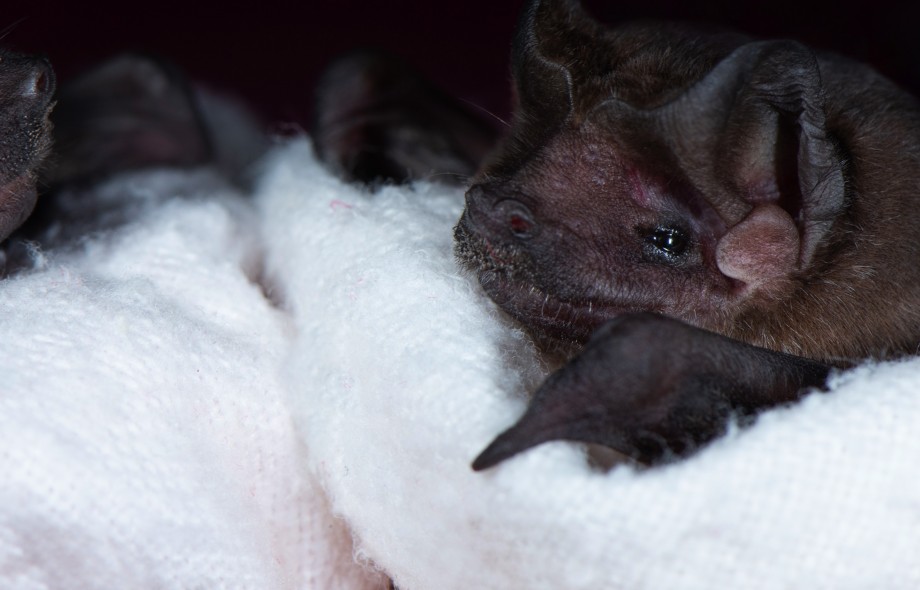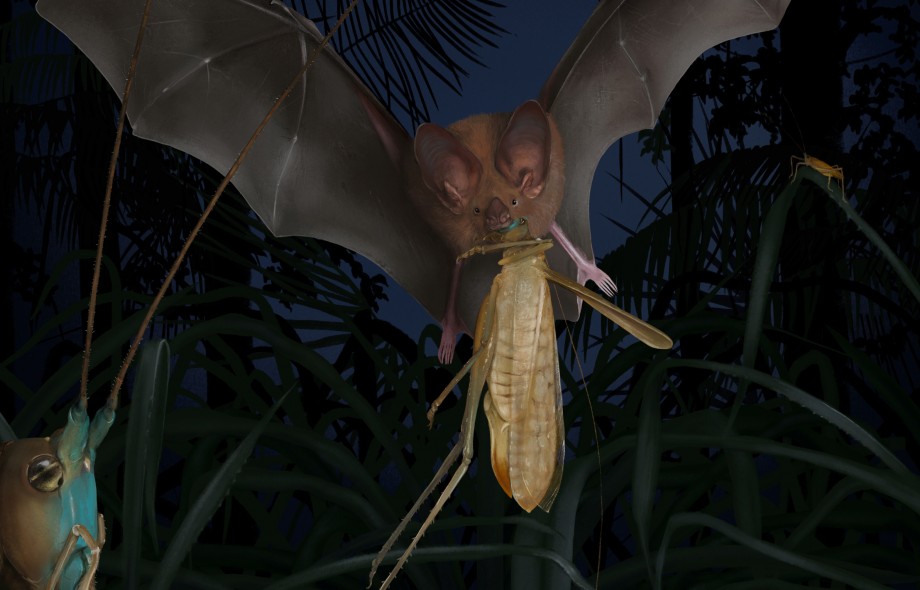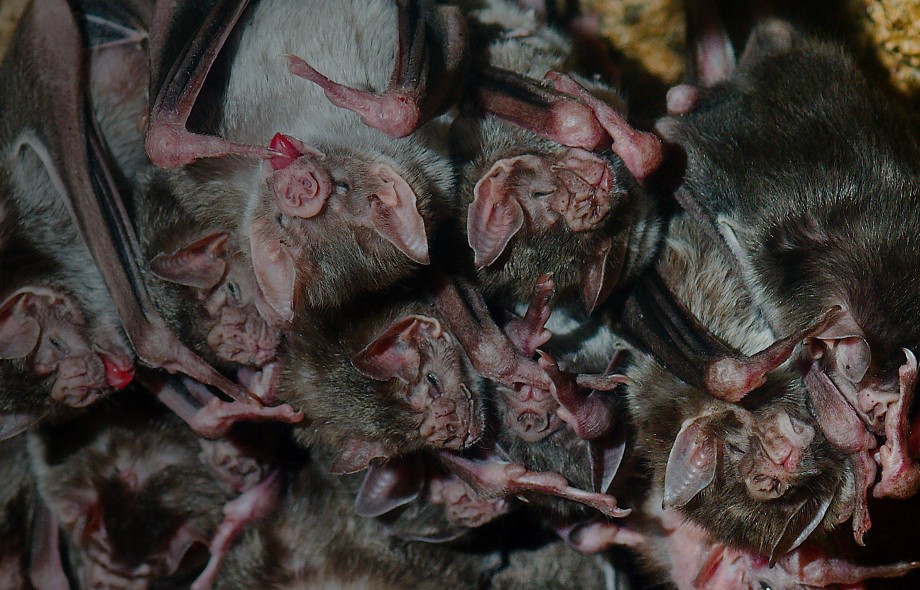The poop of Trachops cirrhosus revealed surprising results about its foraging abilities and prey preferences.

You are here
Projects
& Stories
Rachel Page
Socially foraging bats may find food faster by listening in to the search-phase calls of their group members
People who’ve attended Bat Night, the STRI bat lab’s open house in Gamboa, Panama, may have had the opportunity to hear bat researcher, Mariana Muñoz-Romo, talk about her favorite animals: the only mammals with wings. Now we all have a chance to hear her talk online.
Find out more about why bats carry viruses and how both bats and humans benefit from bat conservation.
Females may also be prone to predation as they move toward a mating call
How do social interactions change in the face of illness? As humans face potential global pandemics we look to nature for examples. Close observation of another highly social animal, the vampire bat, sheds light on how interactions change—or do not change—as individuals become sick.





